|
|
Review of GSM-handset Sony Ericsson W710i
Sony
Ericsson W710i live photos>>>
Official
photos Sony Ericsson W710i>>>
Standard kit:
- Handset
- Battery
- Charger
- M2 512 Mb memory card and MS Duo adapter
- HPM-65 stereo-headset
- IAC-60 Clip
- USB connectivity cable
- User’s Guide
The Walkman line-up has recently received another newcomer, but
this time in the form of a sport-centric device packing music capabilities
and motion sensor in a clamshell shaped casing. The handset was
mentioned back in 2003, when both Nokia and Sony Ericsson made their
plans on creating such models public. Nokia 5140i may be considered
as first-wave device of similar kind, since it incorporated a set
of Java-applications, letting its user train without involving a
real coach, because the gadget carried out all the work on its own,
e.g. evaluated loading. Though similar programs could be materialized
in other competing handsets; thus the main purpose of the device
was emphasized with somewhat solid casing. A curious fact – the
5140i wasn’t the only phone to carry sport functions, for example
Siemens M65 was armed with several special capabilities, like Bike-O-Meter,
calculating speed and distance when you were cycling. Even though
the direction of further developments was strictly set, competition
on the market made it possible for such niche as sport-centric device
to occur.
You have to keep in mind, though, that a “sport-centric” model
is not the one packing all its functionality in an impenetrable
casing – in fact it may feature a standard shell. The sharpest distinction
is presence of a sensor, tracking your speed, when you are running
or walking. Having this tool on its board, a handset instantly moves
to sport-centric range, in other words targeted at people who would
really love to keep an eye on their loading. Naturally this holds
true not only for sportsmen, but also for common people, going in
for sports occasionally. So far only Nokia 550 and Sony Ericsson
W710i may be considered as truly sport-orientated handsets. The
biggest difference between these two is that Nokia offers more solid
casing and runs S60 third edition operating system, which implies
it originates from smartphones, while the solution by Sony Ericsson
is just an ordinary feature-packed cell phone. And in light of the
fact both of them share a motion sensor, it is really hard to say
which looks more appealing. Nevertheless, it’s a bit too early to
talk about this, so let’s move on the actually reviewing Sony Ericsson
W710i.



The model, following the suit, has a clamshell-twin in the form
of Sony Ericsson Z710i. Slight differences lie in less capable memory
card, shipped in the box, absence of Walkman brand on the casing
and sport functions. Basically these two models can be compared,
yet we would like to avoid confusion among our readers and will
just write a separate review of the latter device. If you remember,
Sony Ericsson W300i and Sony Ericsson Z530i are in same boat, speaking
of likeness.



The design copies the latest solutions by the company and has a
lot in common with Sony Ericsson W300i – just face these two handsets,
they have almost the same curves and edges, though the differences
start popping up when you grasp the W710i for the first time. The
front panel is made of plastic, while it is edged with rubberized
framings. The sides have media player controls mounted on them;
a special button allows switching between currently running applications
(sport, player, standby). Many will be using the phone while on
race-track, so no doubt they will have wet hands; that is why rubber
on the casing is a must. Some people may have a wrong first impression,
thinking that the handset incorporates more solid and strong casing
than it should have, like some other models of its kind by other
manufacturers, but in practice it isn’t so. The engineers have built
up several more layers of plastic, rubberized the framings, strengthened
loop-antenna’s fastening, improved loudspeaker’s grill, preventing
water from getting inside, yet none of these precautions provides
durability enough to withstand a sheet of water. Thus it’s nothing
but a “sport-centric” handset, which will remain manageable only
after slight hammerings or accidental falls.
Video,
comparing it with Sony Ericsson W300i and Nokia 5500 (wmv, 8.5 Mb)>>>





The handset has no changeable covers and comes in two colors Performance
Graphite and Hatha Violet. Both trims look quite good and appear
to be aimed primarily at youth. The W710i measures 88õ48õ24.5 mm,
and weights 102 grams.
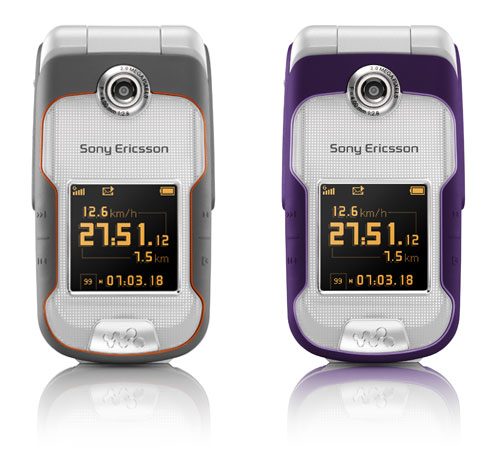
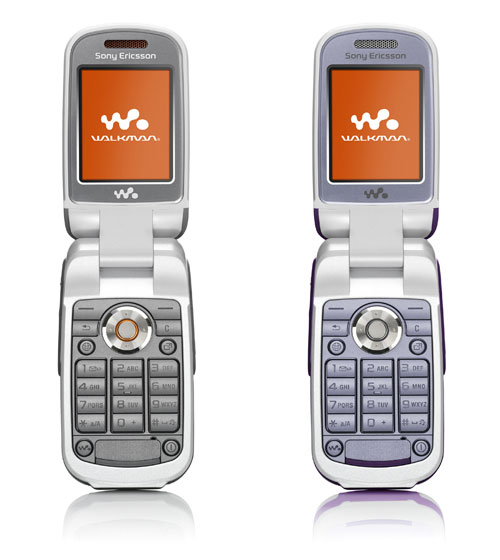
In view of its main function, the external display is not just
large, but a really a huge thing. Measuring 1.5 inches in diagonal
(26x26 mm), it retains some major advantages of monochrome screens
over color ones – firstly, they perform much better in sunlight,
secondly, imagine for moment that you need to check your parameters
while running – even if a color display features great size and
large text, there is no way you can read the information, while
monochrome technology will bring no problems. That is how come a
monochrome display with 128x128 pixels resolution, orange backlighting
(inversion, 4 gradations of orange) is included in this handset.
Obviously, you will be able to use PhotoCall here on no account,
so, on incoming call you will get only name and number. When closed,
the display may show status information and notes taken from the
calendar for current day. All in all, the screen is really decent.
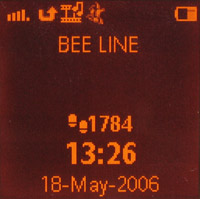
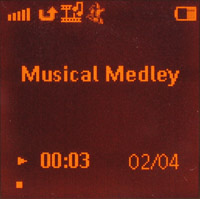
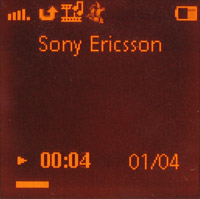
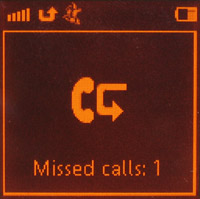

On the front you will find a 2 Mpix camera module, encircled with
a metallic ring. The camera itself is powered by CMOS technology
without auto-focus capability being embedded in, and thus resides
in the same class as Sony Ericsson K610i.

Side-mounted camera shortcut button does not work when the phone
is closed. Volume rocker key is located nearby. “M2” label is located
even lower, yet it isn’t the place where the memory card usually
resides in – in fact it finds its place under the battery cover,
thus no hot swap in full sense of this word is available on the
W710i, to cut long story shot, it isn’t a problem to change cards
on a working phone, though the back cover is to be removed in any
case.



The bottom rim homes a standard Fast Port connector, while the
upper end has a loop antenna on it. The right side features Infrared
port, and a key lock switch, which comes in handy when training.
Video
that demonstrates the phone’s outlook (wmv,14.2 Mb)>>>



The handset is easily opened single handedly. The internal display
is 1.9 inches big, retaining a resolution of 176õ220 pixels (31õ38
mm) and showing up to 262 K colors (TFT). The display is on the
same level with that of Sony Ericsson K750i, but is evidently weaker
that current top models of the company, namely Sony Ericsson K790i.
The sun seems to be not a big deal for this screen as well.
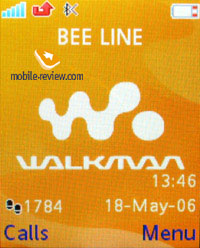
The keypad is made of plastic with medium-sized well-demarcated
numeric keys. On the whole the pad leaves good impression and proposes
the following standard features: all buttons are lit in dim orange,
which is fairly visible in darkness; the media player has obtained
an own fast access button on the keypad; the four-way navigation
button is made of metal and incorporates “OK” key.



The back cover has a latch, which helps a lot in avoiding gaps.
Removing it reveals a 900 mAh capable Li-Pol battery BST-37. As
the manufacturer claims, it lasts for 350 hours in standby mode
and close to 10 in talk mode. In conditions of Moscow networks the
device remained on for nearly two days with average load (one hour
of calls, approximately 30 minutes of games and about 20 minutes
of web-surfing). The heavier load the less the charge will last,
so that it may turn out you will have to re-charge it daily. And
on the contrary – if you reduce talk time to the very minimum, the
battery will provide up to 3 days of stable work. In European networks
life time will be significantly longer, owing to better coverage.


Special headset, the HPM-65, designed for going in for sport is
also shipped in the box. Its core difference from the HPM-70, which
has become a default one for all Walkman-branded handsets, is fastening.
Each half has a plastic loop, ensuring firm fixation in any conditions.
Quality-wise the headset appeared a little inferior to the HPM-70,
but the truth is, there is not so much of a difference.



The package also includes a fully adjustable armband, so that you
can carry the phone when running or training. The handset in its
turn resides in a plastic slot, which many be also used for clipping
the device on your belt.






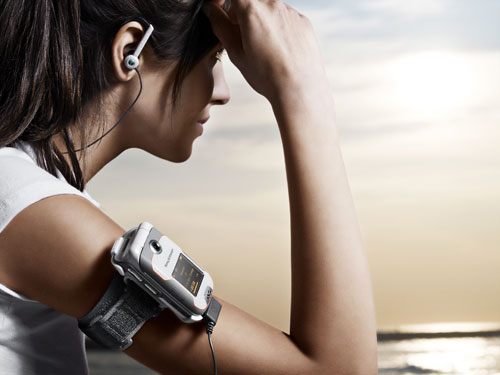
Menu
On the announcement of Sony Ericsson K790i/K800i everyone was prepared
to see more clones of that platform coming in different form-factors.
So is Sony Ericsson W710i (it can be referred to Sony Ericsson K610i
as well), which copies the K790i in many ways. At first we’d like
to have a better glance at all the major alterations and additions
to the interface and then mention the capability, retained by a
number of handsets, already reviewed on our portal.
The model lacks 3D accelerator and takes advantage of a standard
API one, mark this point well. The sequencer found on this model
has 72 tones, but makes sense only when playing midi-tracks, in
all other cases it is better to apply mp3 or even eAAC+.
Bluetooth version for this model is 2.0, it supports EDR you can
save improved energy saving mode in the menu. A2DP module is supported,
this allows using wireless stereo headphones. The module itself
(Bluetooth) was reworked, now it has wider capability with 3rd party
devices. Considering the fact that common realization of this technology
by Sony Ericsson is rather good (above average), no major problems
should be encountered. The handset supports EDGE class 10.
Themes. So comes that some models feature alterations
of standard set of icons and main menu appearance in this item,
while some do not. By default this model runs Walkman theme, so
much familiar to anyone who has ever seen a Walkman-branded handset
even once. The first one of the offered modifications, namely Active,
is rather appealing, but doesn’t bring any new bits to the experience.
On the other hand FemaleLine is worth of attention, as it transfigures
the phone into a feminine clamshell (it seems this theme will be
ruling in a handset, which is still to be announced): it provides
a completely different way of menu outlook, re-shaped icons, all
in all it’s definitely worth checking out. The Lava theme shape-changes
the entire menu appearance and makes it horizontal.
Video
- Thems (wmv, 5.08 Mb)>>>


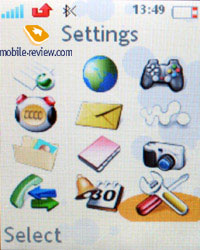
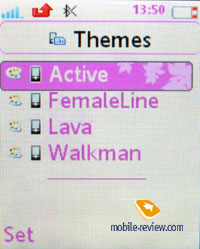
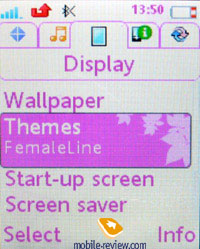
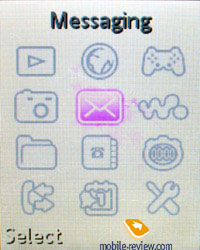
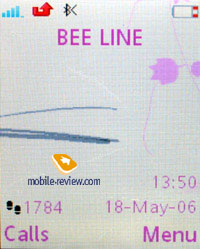

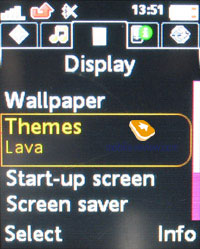
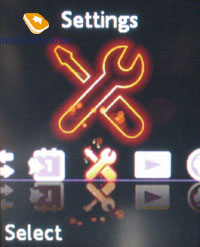

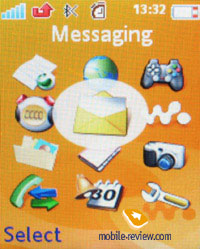
Multitasking of this device matches that of a
smartphone, and is far superior to a standard handset’s one. We
tested this capability with the media player running, as well as
three Java-applications (two games and World Time functions) and
on top of that the pedometer was counting steps at the same time.
At that there were no problems with managing these applications
in Activity Menu mode – everything was like clock-work.
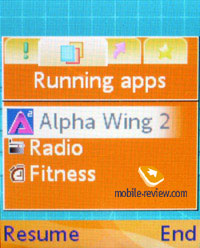

Fitness. The device is armed with motion sensor,
allowing it to calculate number of steps you made during the current
session. This innovative gadget has the following to offer you:
two modes (Walking and Running), adjustable values of distance,
time, upper and lower bounds of speed. Personal data includes age,
sex, weight, height – basically everything that is essential to
evaluate amount of calories spent. While running or walking the
screen reflects all information you can only dream of – time from
the beginning, covered distance, current speed, and user is also
at liberty to switch between screens and learn more on calories
consumption, average lap time or just reset all acquired data and
begin a new cycle. The settings seem to be enough for an ordinary
man, although sportsmen aren’t likely to find something of great
interest in them. Yet the most brilliant function is ability to
set up the measurements individually, this is the way it works:
if you know how long is the distance you are going to run, you can
adjust the settings minutely after covering it, so all posterior
evaluations and data will be even more precise.
Video
- Fitness (wmv,9.86 Mb)>>>
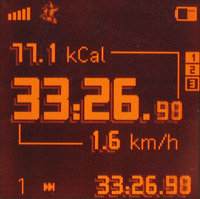
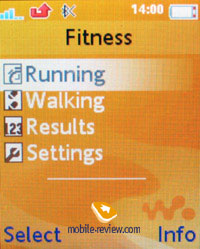
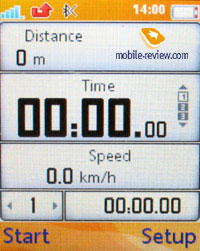
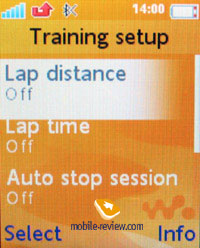
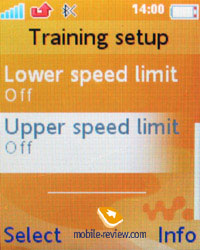
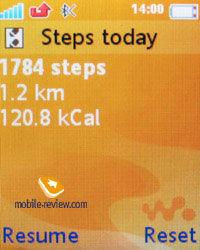
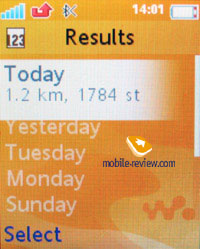

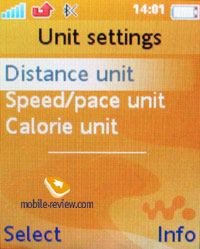
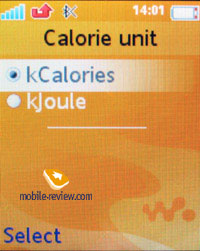

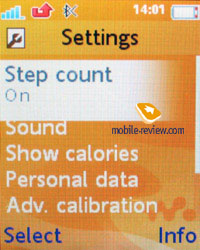
While open, the device doesn’t carry out any calculations, but
once you have folded it (with Fitness mode set beforehand), the
handset begins fulfilling its main function – you will know that
by three sound signals. Observation accuracy is quite enough to
use these functions in day-to-day activity.
All your steps are constantly counted during a light day (you can
switch this off), while the screen displays corresponding numbers.
At midnight this data is automatically reset, so that counting starts
over again.
One more thing of note is possibility to save all the results to
a text file, which may be later on move to other devices or sent
via e-mail services.
Standard applications and UI
The interface of the models seems familiar, as it doesn’t differ
from all other Sony Ericsson devices: the main menu has the appearance
of a grid, consisting of 12 icons. Fast number navigation function
is onboard – these shortcuts can be created for the majority of
pre-installed by the manufacturer items on the menu, though this
option is disabled for personal files and applications.

Text input remains on its comfort level, so, pressing the "#"
key brings out a list of the available languages and you can easily
switch between them while typing.
Besides traditional vertical sub-menus, the vendor has provided
thematic horizontal tabs. It means that while viewing a list of
the dialed numbers, one can see not only the dialed numbers but
in the same time (horizontal joystick striking) switch between missed
and received call tabs. In the phone menu this kind of navigation
is provided anywhere it's possible and it makes using the phone
much easier. The menu ergonomics is quite high in this phone model.
I also note that such horizontal panels appear in Phonebook, Settings
and another menu items as well.


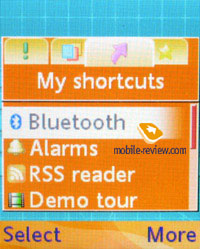

Widening of Activity Menu functionality is the result of the fourth
tab addition. The first three ones display various events, like
missed calls, memos, messages – actually all this regards the first
tab. One can disable Activity Menu for these events as well – in
this case pop up windows, reminding of a certain event type will
appear on the screen. The third tab features the shortcuts, which
should you set up yourself. And the added fourth one contains links
to the most frequently used applications and resources – and the
top of this list is claimed by Google search. To tell the truth,
the way Google trade mark affects consumers can be compared to voodoo
conjuration. That’s why this search engine is used by several other
manufacturers as well.
The second tab is the most interesting, since it appears to be
some kind of a task manager, featuring the list of all running applications.
The previous handsets by Sony Ericsson supported only multitasking
– you could play a Java-game, listen to the radio or player and
type a message at once. Though these devices made one more step
forward – user is able to run two Java-applications at a time and
switch between them. This may come in handy, in case you use an
ICQ-like mobile client, which should be constantly online, and at
the same time want to play a Java-game. Up to now analogues of these
devices by other manufacturers haven't been announces – however
Nokia is scheduling introduction of this function in its handsets
for the end of 2006 – beginning of 2007. The up-to-date models provide
possibility of simultaneous execution only for standard applications
and one third-party program, and at that they can share the same
network access. Later on they intend to add the capability of running
two third-party applications at once – this function is going to
be incorporated before commercial launch of the devices, as it’s
very attractive and relevant nowadays.
The updated USB-connection function can be rated as innovative
as well – from this point on you’ll have to choose beforehand whether
files on memory card will be accessed or not (data transfer mode).
In the former case, the device shuts down, so you’re able to browse
memory card and in the latter one you are offered various USB settings
for accessing the network – basically the handset transforms into
a modem. As far as I remember similar realization of this function
was featured only in Motorola ROKR E2, where you could use USB Ethernet
(though the main point here and there is the same).
Phonebook. Up to 1000 contacts with fully filled
in fields can be stored in the phonebook, but number of phone numbers
is limited to 2500. This means that despite ability to assign up
to 5 phone numbers to one contact, you cannot go over 2500 entries.
This is enough even for most active users, only few have more than
500 entries in their phonebooks.

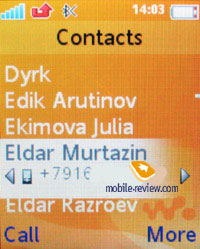

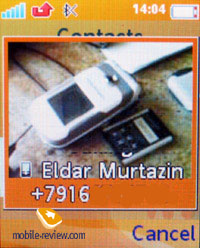
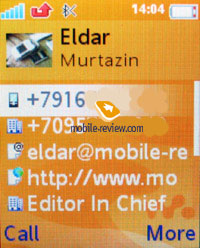
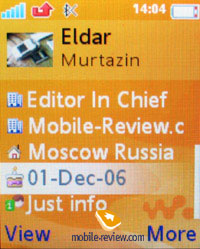
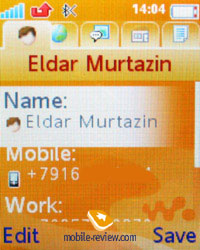
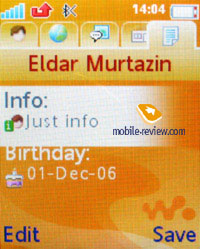
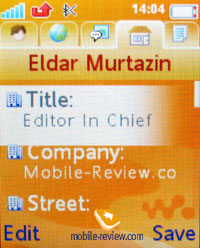

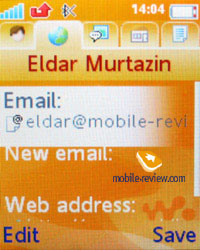
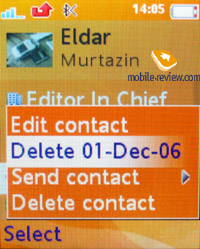
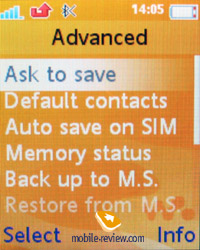
Like I mentioned above, several phone numbers can be stored for
one contact, as well as address, email, IM number, other contact
information. In settings you can select the required fields, they
will be available, meanwhile the useless ones will not be present.
Contacts can be sorted by fields, including name and surname, but
only one input field. Unlike previous models, this time we have
dynamic, handset automatically sorts the list after changes.
It is possible to assign custom ringtone and photo for each contact.
During incoming call the image and ringtone will be used. Date of
birth field can be synchronized with Organizer.
When you are inserting information, you can scroll between tabs,
in the first one you enter phone numbers, their sorting by types.
On the whole the organization of this process reminds of Outlook,
and it means comfort in the first place. Voice tags can be added
for required phone numbers, names, there can be up to 40 of them.
Voice dialing remained the same, it starts looking archaic with
all these voice independent recognition software being implemented
by competitors.
When you are scrolling the contacts, you can try pressing the joystick
to the left or right side to see more information about desired
contact. It’s natural to bind phone number that will be used by
default. From now on Open Contact option is present in the context
menu, it allows viewing the whole contact without going into editing
mode, as it was before.
The company still follows its traditional beliefs that SIM-card
is used in case of emergency, that’s why the only way to see its
contents is to go to special option in the menu. SIM contacts are
not displayed in phonebook.
You can create back-up copy of all entries from phonebook, it will
be stored on the memory card, so you will have the ability to restore
them afterwards.
Contact Groups are required only for mass SMS sending, since it
is impossible to bind custom ringtone or photo for Group.
Messaging. All possibilities for operations with
messages are standard, there are templates and possibilities to
create your own. Phone’s memory together with SIM-card is used for
storing messages. Chat function is supported. On the whole everything
is just like in any other phone from this company. Only emoticons
icons were changed, they became more interesting.
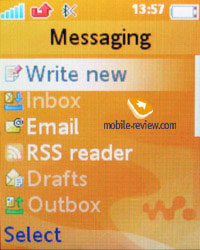
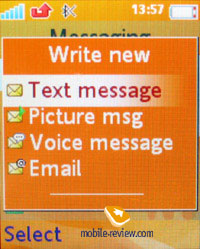
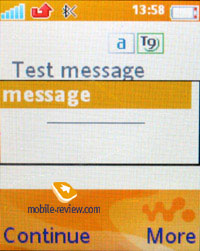
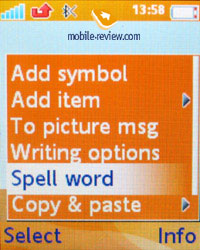
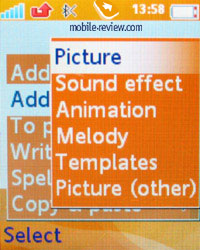
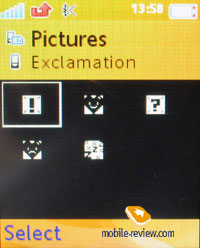
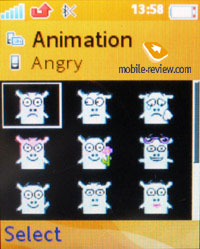
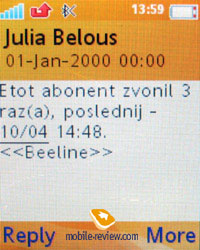
The MMS realization is great as always, you can literally create
video clips, there are lots of settings and this is one of those
things that gives SE’s product parity over competitors.
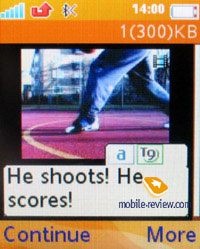
E-Mail client can send and receive emails, all sort of encodings
are supported. The emails can be stored to memory card.
In email settings you can setup separate password for SMTP-accounts,
this is very convenient. Settings are flexible, support of almost
all encodings, and not only Unicode was added. Attachments that
are supported by the phone are presented as icons in email body.
The phone is not working with office files or PDF, but they can
be stored in any directory. The limit for outgoing/incoming email
size is set by operator. Emails with 6-7mb attachments can be sent
without any problems. The phone supports Push Mail standard. Naturally
send & receive process are done in background mode.
RSS Feed. The settings are extremely simple, you
jus specify the title for feed and its address. The phone will connect
and download it. You can update only one item, or the whole feed
at once. Possibilities of built-in browser are used for displaying
the feeds.
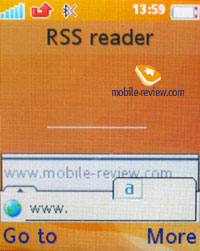
Call list. Up to 30 records can be stored in common
list, all with date and time. Icon that stands for call type (missed/received/dialed)
is shown next to every entry. Besides this additional icon identifies
if this phone number is present in the phone book or SIM-card. The
list of missed calls can be seen separately, it stores up to 10
entries. In this menu you can also see the cost calls, length of
all cals, outgoing calls and last call. Tabs are present, this saves
some time.
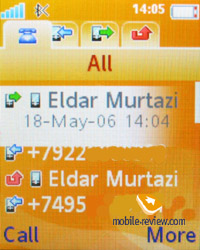
Entertainment. Photos, music files can be accessed
from this menu. MusicDJ function is rather interesting, even though
it is a niche product and there is not much of a chance that this
feature will be in high demand by users. In the editor you can create
and edit ring tones, up to four tracks.
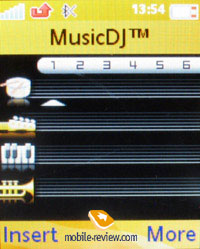
Advanced version of MusicDJ is called VideoDJ, it allows editing
not only music files, but also adding images and signs. The final
result is presented in 3GP file which can be sent by MMS or Email,
or just transferred to another phone.
The creative ones can use graphical editor PhotoDJ, you can draw
simple images. Sometimes time flies when you’re having fun with
PhotoDJ, but most of the time this feature is just useless.
Remote control – ability to control other devices
via Bluetooth connection. It is standard for all phones by SE

The sound can be recorded by Dictaphone, it allows
making voice tags that can be later used as ring tones. Phone calls
can be recorded too, this is done from context menu there is no
time limit.


Games – the phone has two games: Alpha Wing2 (space
arcade), Treasure Tower (a good adventure/arcade).
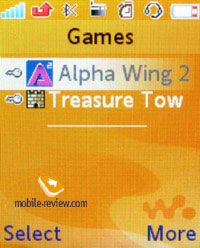
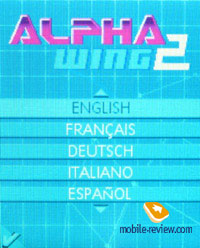



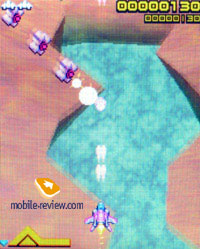
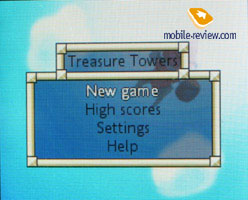

Radio. Memory for 20 radio stations, automatic
search and RDS function are implemented. The radio quality and presentation
is the same as in case with K750i, it is okay. FM-radio would seem
like an ordinary application, if only it did not have Identify Music
option in the menu. While you are listening to any radiostation
and a thought “I want to know the title of this song” pops up in
your head, you can find the answer with the help of this feature.
After activation it will store about 3-4 seconds of the song and
connect to special server that will analyze the song. The result
will be presented as tag scrolled in the upper part of the screen
(horizontal and vertical orientations supported). At first this
service will be free for SE users, it will be launched ~ this summer.
Music Mate. The application, should you want to
learn more about playing on several musical instruments. Nothing
comes into limelight special here.

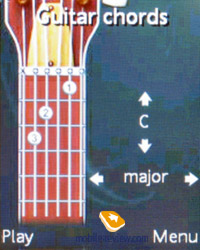
Organizer. Organizer keeps a lot of function underneath.
Let’s review Calendar in the first place. There are three types
for viewing the events: weekly, monthly or today. In last option
you will see list of all events and memos, in two others you will
see highlighted time or day. You can switch to required day and
year, or month. Everything is pretty standard, as well as schedule
input. You get the chance to name the event, define the place where
it will be held, length and setup the reminder (beforetime or right
at the start of the event). For the first time events can be reoccurred.
Types of reoccurrence: daily, monthly. Reminders work even if the
phone is turned off, unless you disable this function.
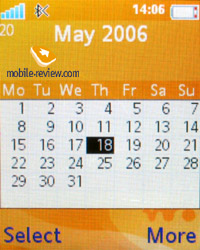
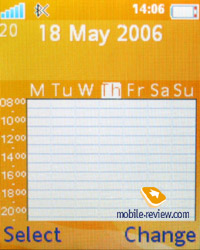
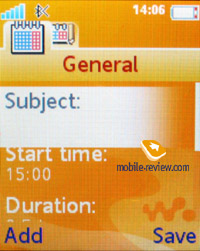

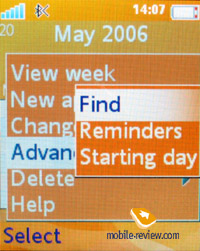
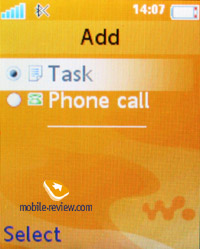
To do list in this phone is quite ascetic. There are only
two types of events: phone call or reminder. On the other hand,
this is really enough, simplicity has its advantages.
The phone has full-fledged search, organized for calendar: you
specify the search line (word or part of it) and after a while you
will see all events that would match this criteria. The function
works rather fast even if the organizer has more than 100 entries,
fast switch to the event from the search window is supported.
The phone features normal transfer of schedule to various devices
(traditionally via IrDA and Bluetooth). Choose the required interval
(day, week or month) and send all entries. I’d like to point out
that the device should support PIM function in order to open and
display this data properly. It is possible to send the schedule
to TV-set through IrDA connection, the TV-set accepts it but is
unable to display the received goods. Data can be received the same
way, with the help of desktop or office PC without any additional
software.
Notes. The phone supports notes entry, though they are
limited by length. The name of the note will be first word entered.
This is not always convenient since you will have to use first word
that would automatically tell you what the note is all about.
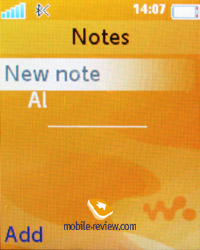
Alarm Clock. We’ve got changes in this one, now you have
five alarm clocks, and each of them can be set up. They can work
in definite week days. Besides the ringtone for alarm clock you
can selet small note and picture, they will be displayed when alarm
clock goes on. Any music file or radio can be seleted as the alarm
itself.

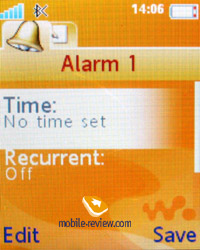
Stopwatch/Countdown. Here everything is quite standard,
although the same can be said about the stopwatch, that has temporary
value function. The phone has special application for storing secret
codes, which was a great hit in previous models, well, standard
calculator is present too.
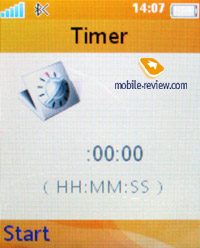
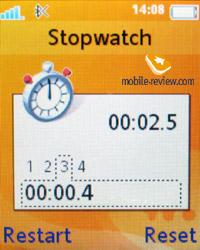

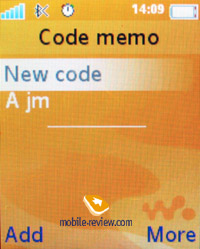
World Time function is inside.

Connectivity. All communicative settings for the
phone can be setup from here, starting from WAP and GPRS (the EDGE
settings are same) and ending up with Bluetooth and Synchronization.
I will not describe the standard options, they are standard in the
first place, everything works fine. I’d like to highlight stable
Bluetooth work, no problems were encountered, synchronization with
other devices runs smoothly, all profiles (including A2DP, which
is stereo sound via Bluetooth) are supported. Bluetooth version
is 2.0 with EDR support.
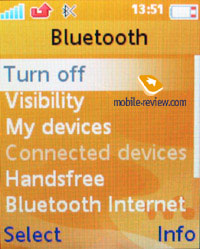
Local and Remote synchronization can be setup from the same menu.
The phone supports HID profile which allows using it as Remote control
for PC and other devices.
The following Bluetooth profiles are supported:
- Dial-up networking profile
- Generic Access profile
- Generic Object Exchange Profile
- Object Push Profile
- Serial Port Profile
- Handsfree Profile
- Headset Profile
- Synchronization Profile
- Basic Imaging Profile
- File Transfer Profile
- HID Profile
- SyncML OBEX binding
- JSR-82 Java API
- A2DP
WAP. The browser owns separate menu item, the
version is 2.0, it supports secured connections which is quite important
in case you are using electronic transactions. New wallpapers, themes
and ring tones can be downloaded right away, it’s all available
at the original web-site.

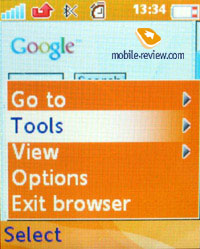
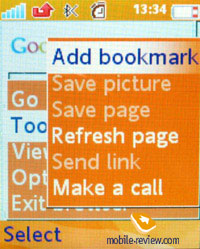
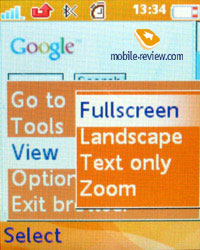
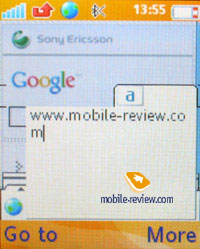
Standard browser for Sony Ericsson phones is NetFront, it supports
one-line web-page display and HTML. One of the convenient parts
is ability to create folders with files, bookmarks. The browser
is considered as one of the best on the market, but limited phone
resources does not make its usage into one easy process. On the
whole those who are using Internet constantly should consider buying
PDA or laptop, since full Internet access is not in such high demand
for this device class. At the same time RSS Feeds support is great,
it allows using the phone for reading news, announcements and materials.
HTML pages that content advanced formatting or overcome 500kb in
their size will not be displayed. On the whole standard browser
is optimal, but usage of Opera Mini is preferable, it has more opportunities.
Settings. This menu stores all settings related
to phone’s work and partly with its outlook. In the stand by mode
clock can be displayed in the bottom (yes or no), you an also choose
the font size, in case you select big letters it will be easy to
see what time it is, but the font itself becomes transparent. There
isn’t anything to add, all the rest is standard.

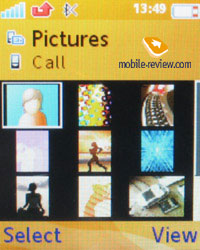
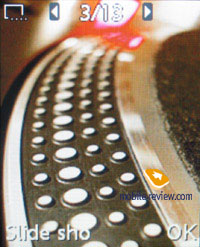
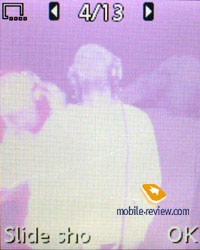
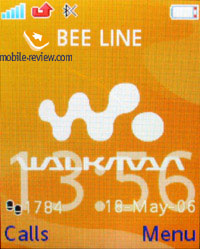
File manager, memory size. The user has 10 MB
of available memory add empty M2 memory card to that too. Here all
data (photos, videos, applications) can be stored. The remaining
memory is occupied by preinstalled applications, you cannot delete
them. Part of memory is dedicated to phonebook, call lists, etc.
The phone has simplest file manager, with its help files can be
sorted by various folders, custom directories can be created in
phone’s memory, files can be moved there as well. With or without
cable the phone can become a perfect storage, there are no problems
with recording your own files, even if they cannot be opened by
the phone.
Traditional file sorting includes the following options: date,
type and size. The Image Gallery has new setting called Timeline,
after you activate it you will see a bar on which months will be
shown. And in lists you will see photos that were made during this
or that month. You can make the list more detailed by pressing the
same key twice, in that case you will see days instead of months,
meaning that photos will be sorted in the following structure: list
of images made on October 3rd, for example. This is a good way to
wander around tons of images.
Player. The phone has built-in mp3 (AAC, eAAC+,
WMA formats are also supported), 3GP and mpeg4 player. It is a good
way to listen to mp3 files. Besides settings you can setup equalizer
(there are predefined settings: Bass, Voice, Tremble, etc), as well
as the ability to create your custom ones. The sound changes according
to the settings, this is noticeable.
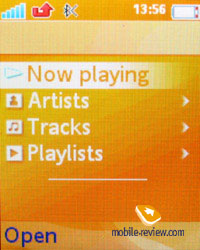
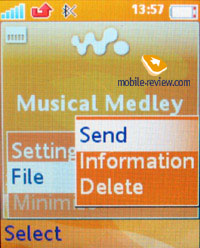


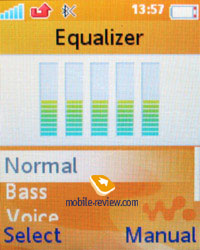
The player is similar to the one Sony Ericsson W800i, it replicates
it maximally. It is possible to minimize the player, the phone supports
multi-function at full scale. There are no concerns at all, even
though it’s weaker than the one used in Sony Ericsson W950i.
Camera. The device is equipped with a 2 MP camera
with a CMOS matrix without auto-focus.
The device supports three possible resolutions - 1632x1224, 640x480,
160x120 pixels. Two types of data compression, Normal and Fine,
are at your disposal. The majority of the photos represented are
in the Fine quality. The photos differ in size almost two times
depending on the resolution. Thus a photo in the Normal mode takes
about 300 KB when the Fine quality gives 500-600 KB. Saving the
photo takes the same time not depending on the case, that is about
1-2 seconds, and that is quite well for such a file size. If to
take several photos one after another (not a Burst mode but just
successively) then you'll notice slightly slowing writing speed
(to 3-4 seconds). According to subjective feelings the device buffer
is expected for 2 MB of memory.

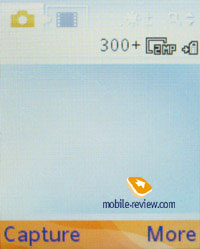

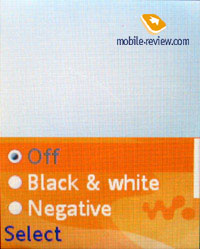
The camera settings look the following way:
- Shutter sound. You can choose on of the three shutter sounds
but not turn the sound off.
- White balance. A possibility to choose between an automatic
mode or Incandescent, Fluorescent, Daylight.
- Effects. Several effects may be applied to the photos, they
are Negative, Solarize, Sepia, Black & White.
- Timer is activated for a certain time period for self shooting.
- Night mode is for shooting in the dark. Noises raise on a photo,
exposition is increased (you shouldn't move the device in order
not to get a blurry photo).
- Shooting mode. Normal mode, that is taking usual photos. A
multiple mode (Burst 4) allows taking four photos for a series.
Landscape is a very interesting mode that allows taking rather
unordinary photos, has no rivals for the moment. The last mode
is taking photos with frames, photo resolution decreases automatically.
The screen may serve as a viewfinder when in the shooting mode.
The picture moves very smoothly and everything is clearly seen.
Number keys help in switching between various functions and shooting
parameters quickly that fastens work greatly.
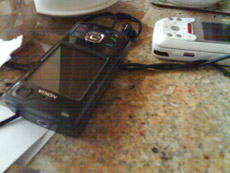 |
 |
(+)
maximize, 1600x1200, JPEG |
(+)
maximize, 1600x1200, JPEG |
 |
 |
(+)
maximize, 1600x1200, JPEG |
(+)
maximize, 1600x1200, JPEG |
 |
 |
(+)
maximize, 1600x1200, JPEG |
(+)
maximize, 1600x1200, JPEG |
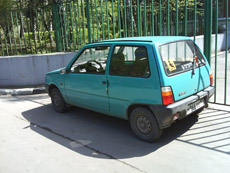 |
 |
(+)
maximize, 1600x1200, JPEG |
(+)
maximize, 1600x1200, JPEG |
 |
 |
(+)
maximize, 1600x1200, JPEG |
(+)
maximize, 1600x1200, JPEG |
Video may be recorded in two resolutions (176x144, 128x96), file
format is 3GP. Clip duration may be limited (up to 10 seconds) or
unlimited. The quality of the clips is average and obviously inferior
to many top models.
Video
sample (3GP, 176 Kb)>>>
Impressions
Despite the polyphony being 72-tone, the handset does not provide
a breakthrough in sounding of mp3 tunes as compared to other Sony
Ericsson branded phones. The loudspeaker is average volume-wise
and has a great part of basses in its sounding, so the call is easily
heard even on the street. The silent alarm is of moderate power
or even slightly higher than this, but even this admission isn’t
an excuse for cases when it is too weak to be felt. The receiving
part is on the same level as that of other products by the company
– in other words, it’s very fine.
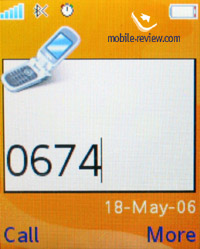
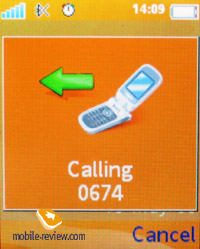
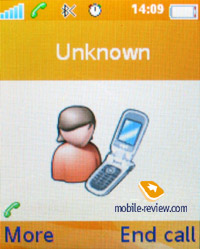
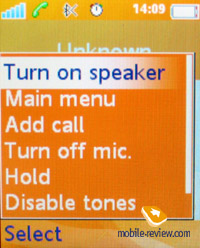
The model incorporates both great strengths and weaknesses: the
former category boasts cutting-edge motion sensor and following
Fitness applications. And even though they have very limited functionality,
e.g. there is no training schedule available, like on Nokia 5500,
many simply won’t notice these flaws, especially when offered constant
evaluation of covered distance and spent calories. Adaptive mode
allows setting up the sensor individually, adding a major plus to
the capability. The main purpose of the device show through almost
everything: finishing, design, package after all. Comparing it with
Nokia 5500, one could get an impression that the market leader has
created an all-round best device, but what about having less life
time and its sport functions cut (as a matter of fact it’s intended
for other applications) – this is a retribution for Nokia 5500 being
a smartphone, possessing more solid casing. That is why these two
models are not direct competitors, but rather a pair of handsets,
which have something in common – in the end, the market will accept
both devices without eliminating one.
As for the camera found on the W710i, it appears to be some sort
of a makeweight here – the manufacturer has knowingly reduced its
capabilities in order not to introduce a competitor for its top
models.
Sony Ericsson W710i is scheduled to begin shipping at the end of
August. Taking account of its standard kit, positioning in medium
price-bracket appears justified, as well as its price of 260-270
Euro, which will fall down after some time to 230-240 Euro per unit.
In view of absence of direct competitors and lower price as compared
to Nokia 5500 (and if you take into account the shipped memory card,
far lower), this solution eventually turns out to be quite appealing.
Obviously, it’s going to occupy only a certain niche and not the
mass market, yet the youth will find this phone very fitting and
might make use of it wide functionality, not typical for similar
devices.
Eldar Murtazin (eldar@mobile-review.com)
Translated by Oleg Kononosov (oleg.kononosov@mobile-review.com)
Published — 19 May 2006
Have something to add?! Write us... eldar@mobile-review.com
|
News:
[ 31-07 16:21 ]Sir Jony Ive: Apple Isn't In It For The Money
[ 31-07 13:34 ]Video: Nokia Designer Interviews
[ 31-07 13:10 ]RIM To Layoff 3,000 More Employees
[ 30-07 20:59 ]Video: iPhone 5 Housing Shown Off
[ 30-07 19:12 ]Android Fortunes Decline In U.S.
[ 25-07 16:18 ]Why Apple Is Suing Samsung?
[ 25-07 15:53 ]A Few Choice Quotes About Apple ... By Samsung
[ 23-07 20:25 ]Russian iOS Hacker Calls It A Day
[ 23-07 17:40 ]Video: It's Still Not Out, But Galaxy Note 10.1 Gets An Ad
[ 19-07 19:10 ]Another Loss For Nokia: $1 Billion Down In Q2
[ 19-07 17:22 ]British Judge Orders Apple To Run Ads Saying Samsung Did Not Copy Them
[ 19-07 16:57 ]iPhone 5 To Feature Nano-SIM Cards
[ 18-07 14:20 ]What The iPad Could Have Looked Like ...
[ 18-07 13:25 ]App Store Hack Is Still Going Strong Despite Apple's Best Efforts
[ 13-07 12:34 ]Infographic: The (Hypothetical) Sale Of RIM
[ 13-07 11:10 ]Video: iPhone Hacker Makes In-App Purchases Free
[ 12-07 19:50 ]iPhone 5 Images Leak Again
[ 12-07 17:51 ]Android Takes 50%+ Of U.S. And Europe
[ 11-07 16:02 ]Apple Involved In 60% Of Patent Suits
[ 11-07 13:14 ]Video: Kindle Fire Gets A Jelly Bean
Subscribe
|


























































































































































